Review of Night Gallery: Season 1 (Box Set)
Introduction
Ladies and gentlemen, welcome to the Night Gallery...
After five years, 156 episodes and many a childhood nightmare, the original series of `The Twilight Zone` ended in 1964. Although never a massive ratings success, it had a large hand in introducing hard science fiction concepts to the masses, and its morality tales hidden behind the facade of fantastic stories of the unnatural proved very popular with those who watched it.
So it comes as no surprise that after the success of `The Twilight Zone`, Rod Serling would sooner or later come up with an idea for another late-night anthology series. Indeed, shortly after the last of the 156 episodes was screened, plans were afoot at ABC to revive it as a purely supernatural-themed series titled `Witches, Warlocks and Werewolves`, or as `Rod Serling`s Wax Museum`, in which waxwork models would represent the main character in the night`s coming tales. Ultimately, none of these early conceptual ideas survived past the planning stages. And so, it was not until 1969 and after a lot of jobsworth television writing that Rod Serling dreamt up the format for what would become `Night Gallery`: each story, just like `The Twilight Zone` before it, would be introduced by Serling himself. And where `The Twilight Zone` was a show steeped in sci-fi and fantasy, `Night Gallery` would take its focus in the direction of horror and suspense.
A three-part special was devised to cement the format and introduce it to viewers. Like `The Twilight Zone` before it, Serling would introduce each segment in his inimitable way, this time accompanied with reference to three paintings which hung on the wall behind him. This would act as a pilot episode when a full series was finally commissioned, and was even the recipient of the highest ratings of the night when it was first broadcast on November 8th 1969. In the years which followed, the show ran for 43 episodes - over 90 individal tales, drawing heavily on the short works of classic authors including Robert Bloch, H.P Lovecraft, Conrad Aiken, Fritz Leiber and David Ely, as well as many original teleplays from Serling himself.
The whole of the debut season, the 90 minute special plus 6 episodes, each running for 50 minutes, is out now courtesy of Playback, Universal`s label dedicated to modern and classic cult TV.
Episodes:
Pilot
------------
In `The Cemetary`, a greedy nephew returns to claim the estate of his rich uncle, but is haunted from beyond the grave by the deceased. In `Eyes`, a manipulative blind woman buys the eyes of a down-at-heels gambler for some radical surgery to repair her vision - but the gift of sight is not what she expected. In `Escape Route` an exiled Nazi war criminal is forced to face his past when he meets a concentration camp survivour in a South American museum.
Episode 2
------------
In `The Dead Man`, two doctors awe over the potential applications of a psychosomatic hypochondriac, and in `The Housekeeper` an eccentric doctor hires a kind-hearted housekeeper, but he has more in mind for her than cleaning.
Episode 3
------------
`Room with a View` sees a bed-ridden man overcome his physical limitations by elaborately grooming his nurse to commit murder. `The Little Black Bag` is the tale of 21st century medical equipment falling into the hands of two 20th century winos. In `The Nature of the Enemy`, a mission to the moon goes drastically wrong, but the true horrors have yet to be revealed
Episode 4
------------
In `The House` a woman is plagued by dreams of a beautiful home, a place that holds more mystery than she could have imagined. In `Certain Shadows on the Wall`, three siblings are aghast when their dead sister`s apparition appears on the wall.
Episode 5
------------
`Make Me Laugh` is the tale of a stand-up comic who learns the meaning of "be careful of what you wish for" when he encounters a clumsy djinn. In `Clean Kills and Other Trophies` a tyrannical father angers the powers-that-be when he blackmails his son into hunting for sport.
Episode 6
------------
A man is goaded by his dead wife at her coffinside in `Pamela`s Voice`. In `Lone Survivor`, a lifeboat from the Titanic appears three years after the mighty ship sank, with its sole occupant very much alive. In `The Doll`, a British colonel feels the wrath of dark magics when he is set upon by a deadly doll in an act of bitter revenge.
Episode 7
------------
`They`re Tearing Down Tim Riley`s Bar` sees a washed up salesman haunted by visions of his past. In `The Last Laurel`, a bed-ridden man masters the art of astral projection in order to commit a crime of passion.
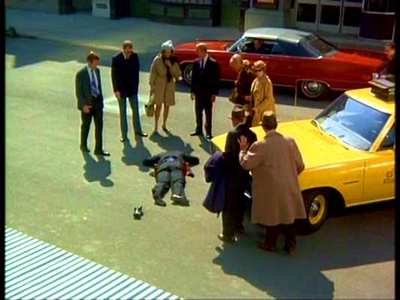
Video
Night Gallery gets the full frame, broadcast ratio 1.33:1 treatment for its debut release on region 2. There`s been no makeover of the original print, so in keeping with TV shows of the era, it`s a little flat in terms of colour, with variable print blemishes more or less dependant on the on-screen saturation. Naturally, scenes hued with brighter colours are more likely to show up grain and other flaws. There are also a few occasions of strong shimmering. However, the only time visuals plummet to really poor quality are when certain episodes use old stock footage, and this is generally very grainy, somewhat blighted stock roll.
For the most part, this first season DVD of Night Gallery is more than adequate considering the age of the print, and most of the flaws tend to improve as you move through the season to the later episodes.
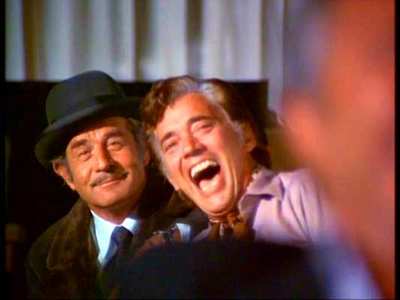
Audio
A sole Dolby Digital 2.0 track, converted adequately from what one would assume was an original mono source.
No subtitles. Pah!
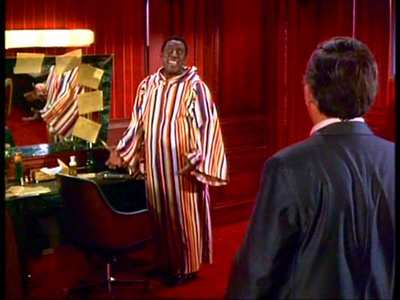
Features
In a show of generosity, we have a taster of the following two seasons with a few bonus episodes:
Bonus Episode 1 (Season 2)
------------
In `The Diary`, an aging actress gets some sweet revenge on the TV personality who slighted her. `A Matter of Semantics` is an excuse for Dracula to talk cross-purposes in a blood bank. In `Big Surprise`, a creepy old man persuades some local kids to dig a hole to find a "big surprise". In `Professor Peabody`s Last Lecture`, a young H.P Lovecraft and his fellow classmates watch in horror as their teacher reads from the dreaded Necronomicon
Bonus Episode 2 (Season 3)
------------
`The Return of the Sorcerer` is the tale of a translator hired by an old occultist to help him perform an ancient black mass.
Bonus Episode 3 (Season 3)
------------
In `Whisper`, a man fears he`s losing his wife, a medium, to the spirits she channels.
-------------
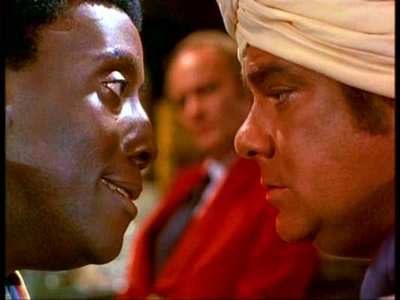
Conclusion
This first season of the `Night Gallery` anthology show is a bit hit and miss, but thankfully the hits are more frequent, and certainly more resounding, than the misses. While there`s a certain air of `of its time-ness`, the stronger stories among these seven episodes of delicate horror remain effective enough to entertain and thrill even the most hardened horror buff, provided they can value the format of classic late-night television and their sense of appreciation hasn`t been decayed by several decades worth of horror saturation, seen-it-all-before-syndrome and the all too popular post-modernism.
A young Steven Spielberg actually has two director credits in this season, for the segment of the pilot titled `Eyes` and episode five`s `Make Me Laugh`. Both stand proud as two of the best episodes of the season, and looking back at them now, his eye for composition and use of technique certainly herald future great things from the then 21-year old. Other episodes of note are the Burgess Meredith starer `The Little Black Bag`, the wonderful tale of future-meets-past in which the quality of acting surpasses the norm for small-screen based performances of the time, and `The House`, the spookiest tale of the season and quite an effective chiller. While there is a variance in quality, there`s only really the one episode on this set that is outclassed completely by the rest, and that is `The Nature of the Enemy`, a short ten-minute story which has a laughably bad ending. Although the set-up is suitably gripping, the pay-off is pitiful, a real example of material that didn`t translate well to TV of the era. Thankfully, the overall steady quality of the season more than gives reason to overlook it.
The same seemingly can`t be said for the next few seasons, if the bonus episodes on disc three is to be taken as an indicator of quality. Sadly only the first segment of the second season episode titled `The Diary` holds any water, and a presumptuous reviewing of the material may suggest this illustrates a series deteriorating in terms of ideas and values as the years go by. Singled out for bad behaviour is `A Matter of Semantics`, literally a two-minute comedy sketch, and indicative of the poorly received comic element apparently introduced to `Night Gallery` after its debut season. But it`s the two episodes from the third season that really disappoint. By the third year, the show had its episodes shortened to thirty-minutes in length (a once common practice in the US, used to bolster the episode numbers for syndication) and the two stories offered up here are of the most drab quality. The ghastly `The Return of the Sorcerer` can`t be saved by a starring role from horror-vet Vincent Price, and `Whisper` is underdeveloped and overlong by more than half its running time.
While `Night Gallery` is a fine example of an anthology series made with passion, it still very much lingers in shadow of `The Twilight Zone`. Much of the same storytelling technique is used, as almost all of the stories have metaphors and traditional morality tales bubbling away beneath the surface. But unlike its forebarer, `Night Gallery` wasn`t quite so quick to find its genre niche as a horror and suspense showcase, appearing a little underconfident in leaving behind the sci-fi tinges that `Zone` made so popular, with a few segments plunging into fantastical territory. The problem with that is Serling`s first show generally did them better.
A minor aspersion aside, for a show still finding its feet in 1969/1970 to deliver a plethora of quality stories is highly commendable, and this first batch of tales is sure to find a place on the shelf of many admirers.
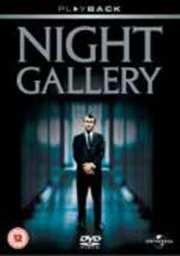




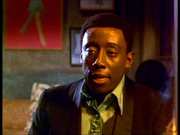
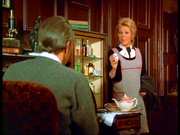
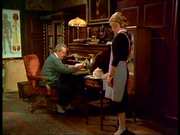
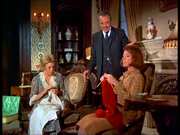
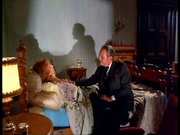
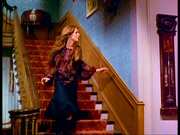

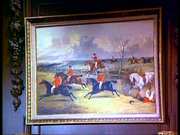
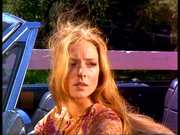

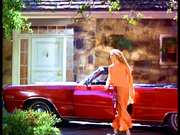
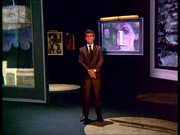
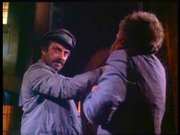

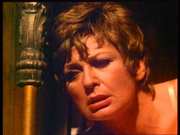
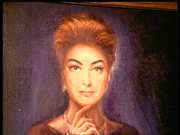
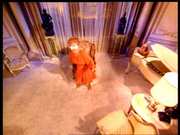
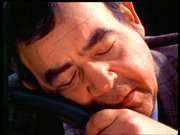
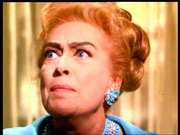

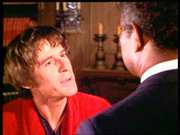

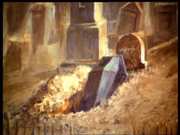
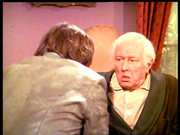
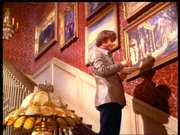
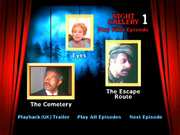
































Your Opinions and Comments
Be the first to post a comment!